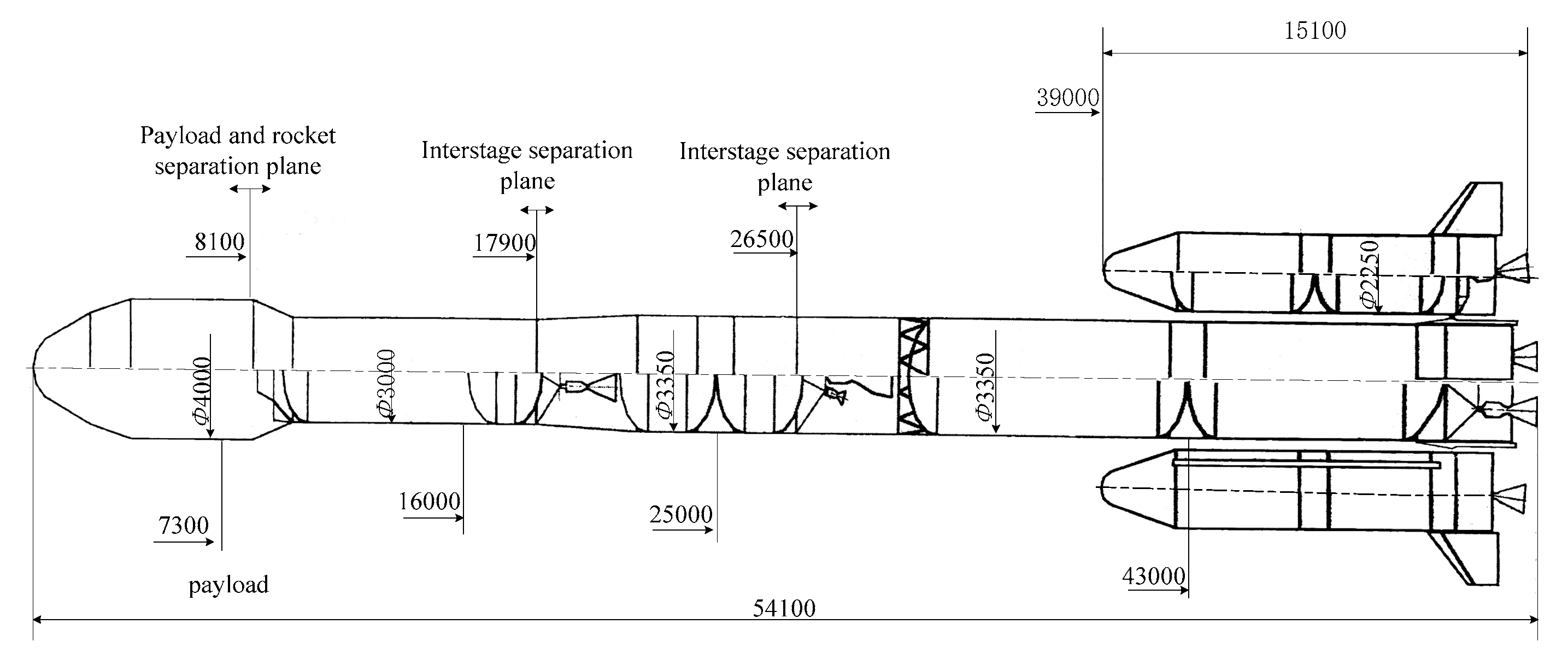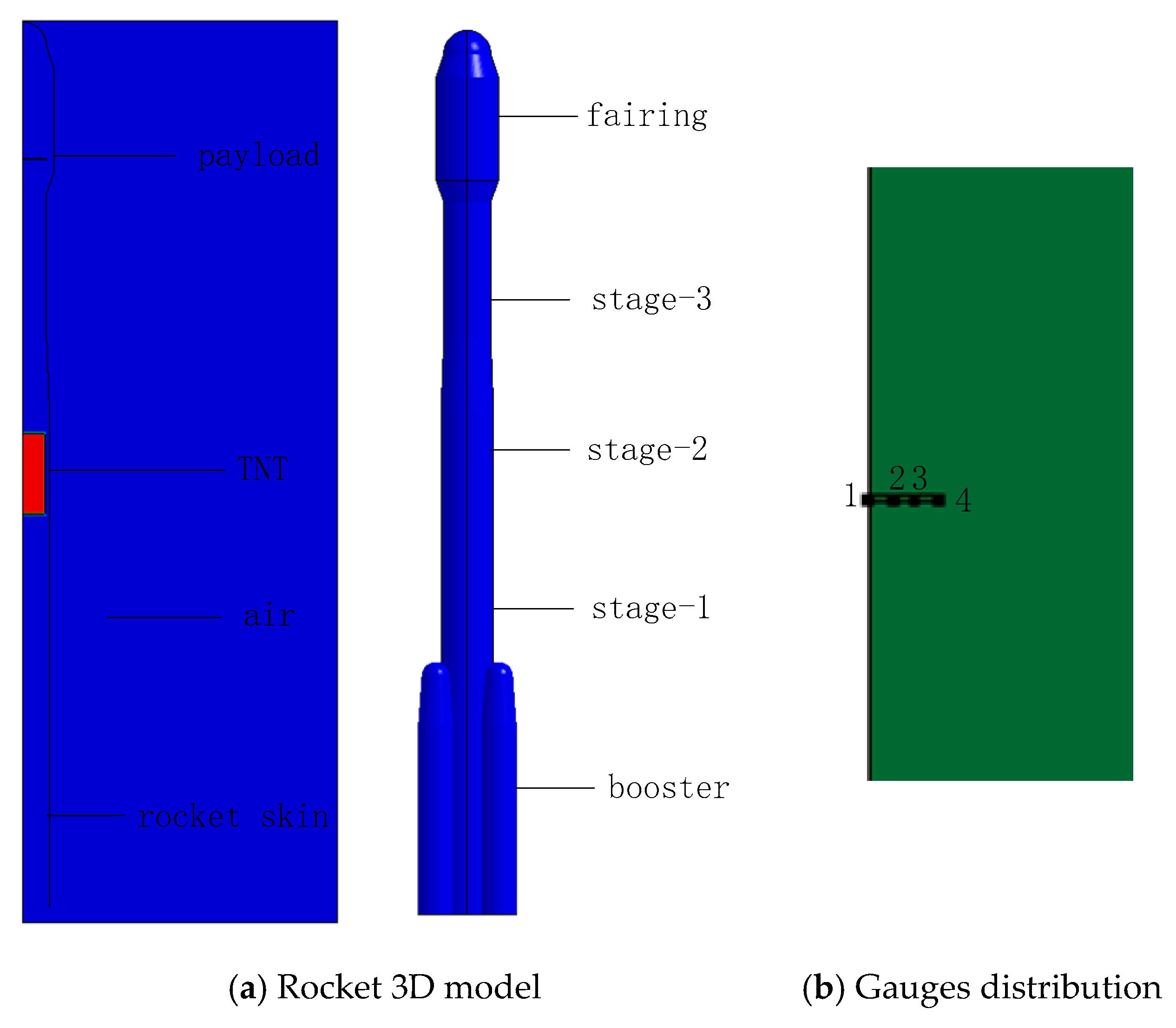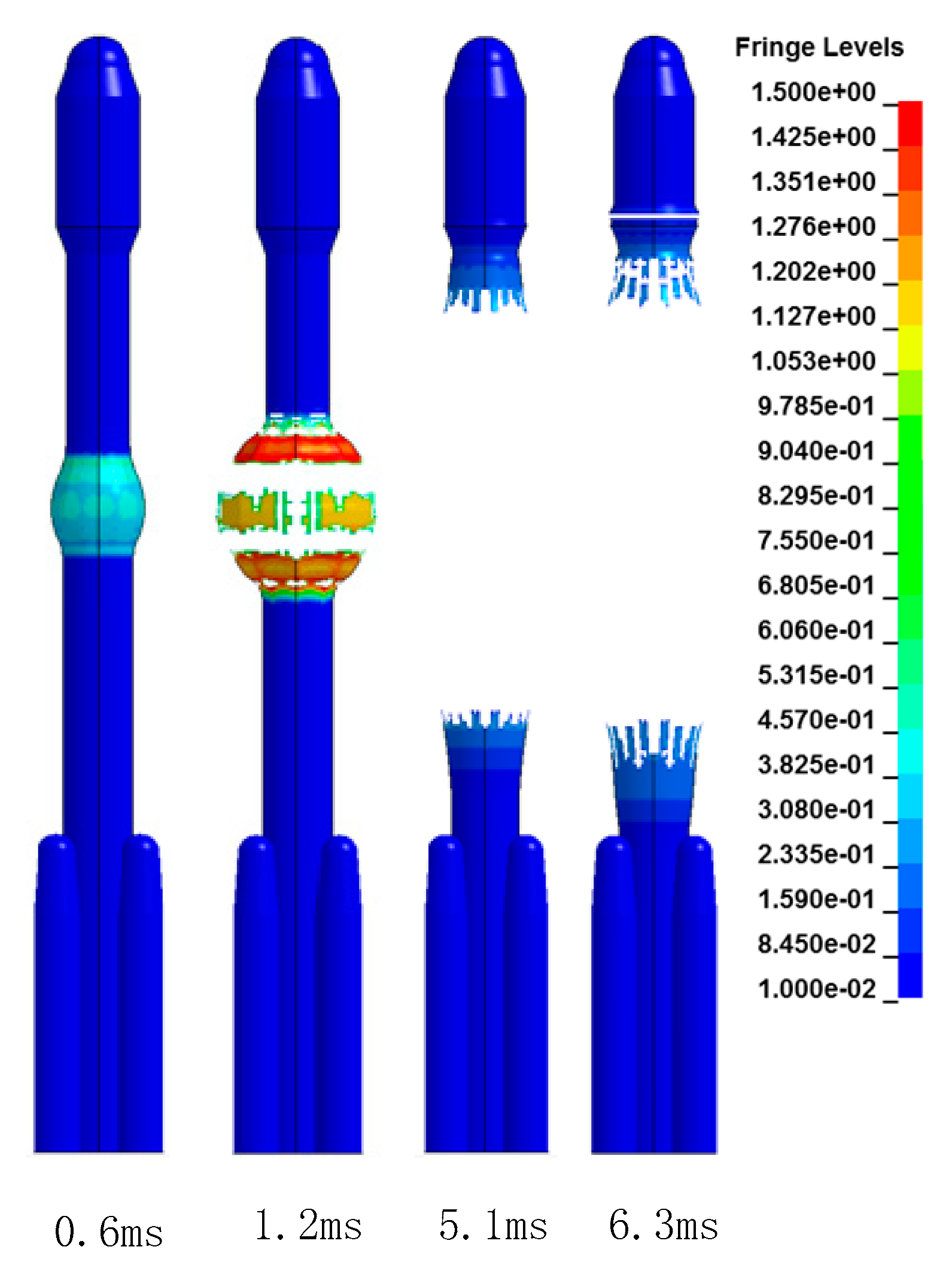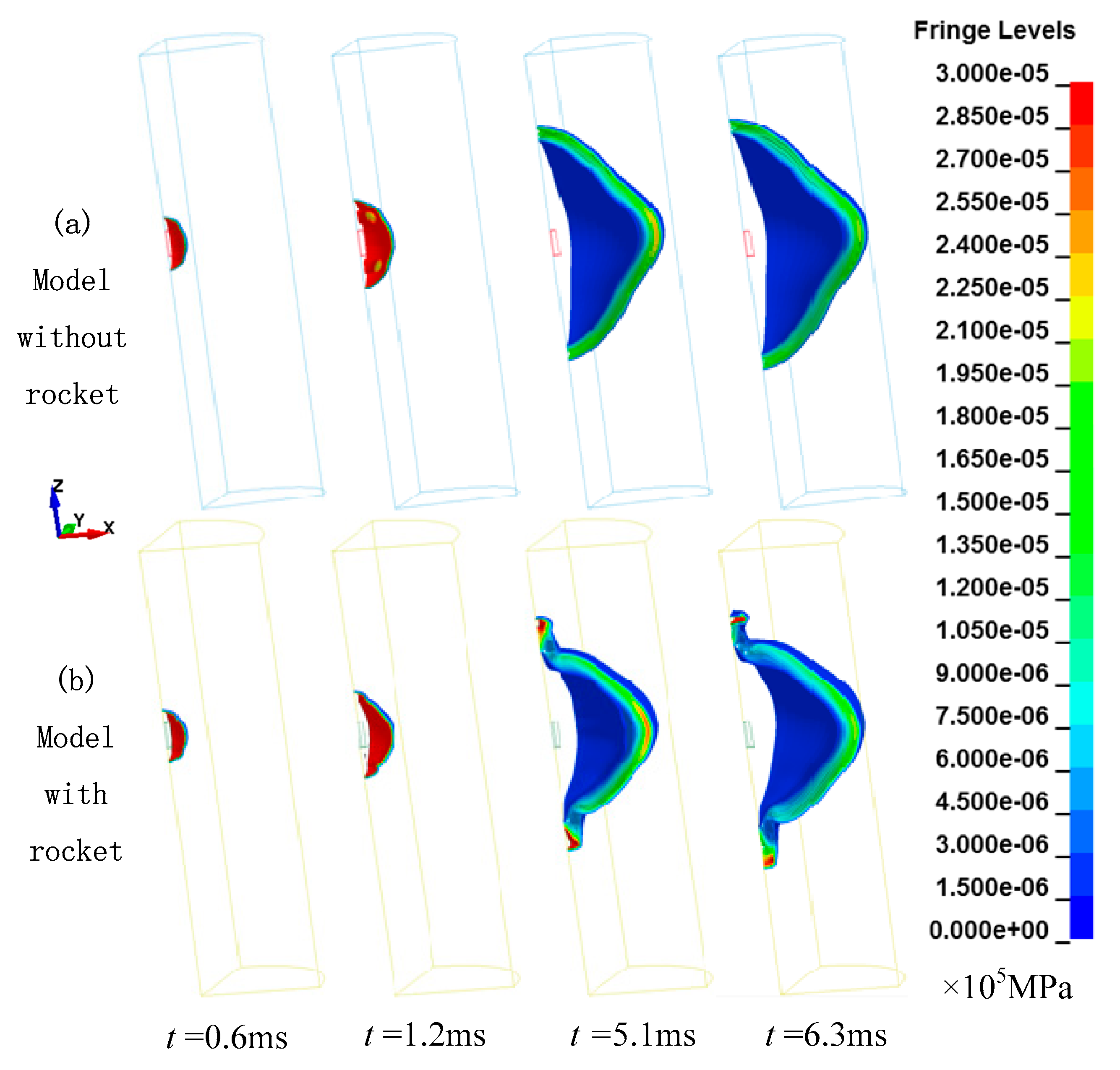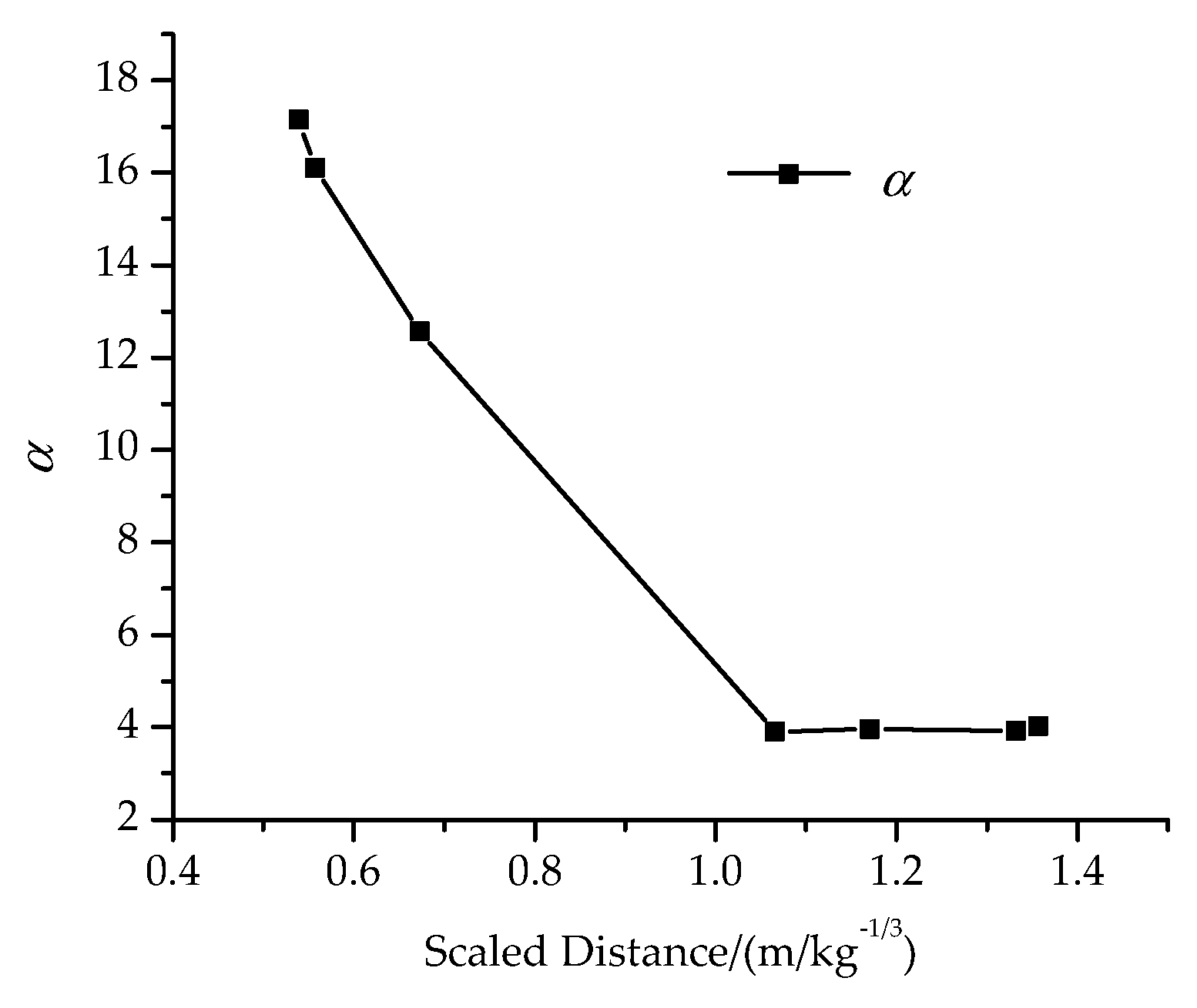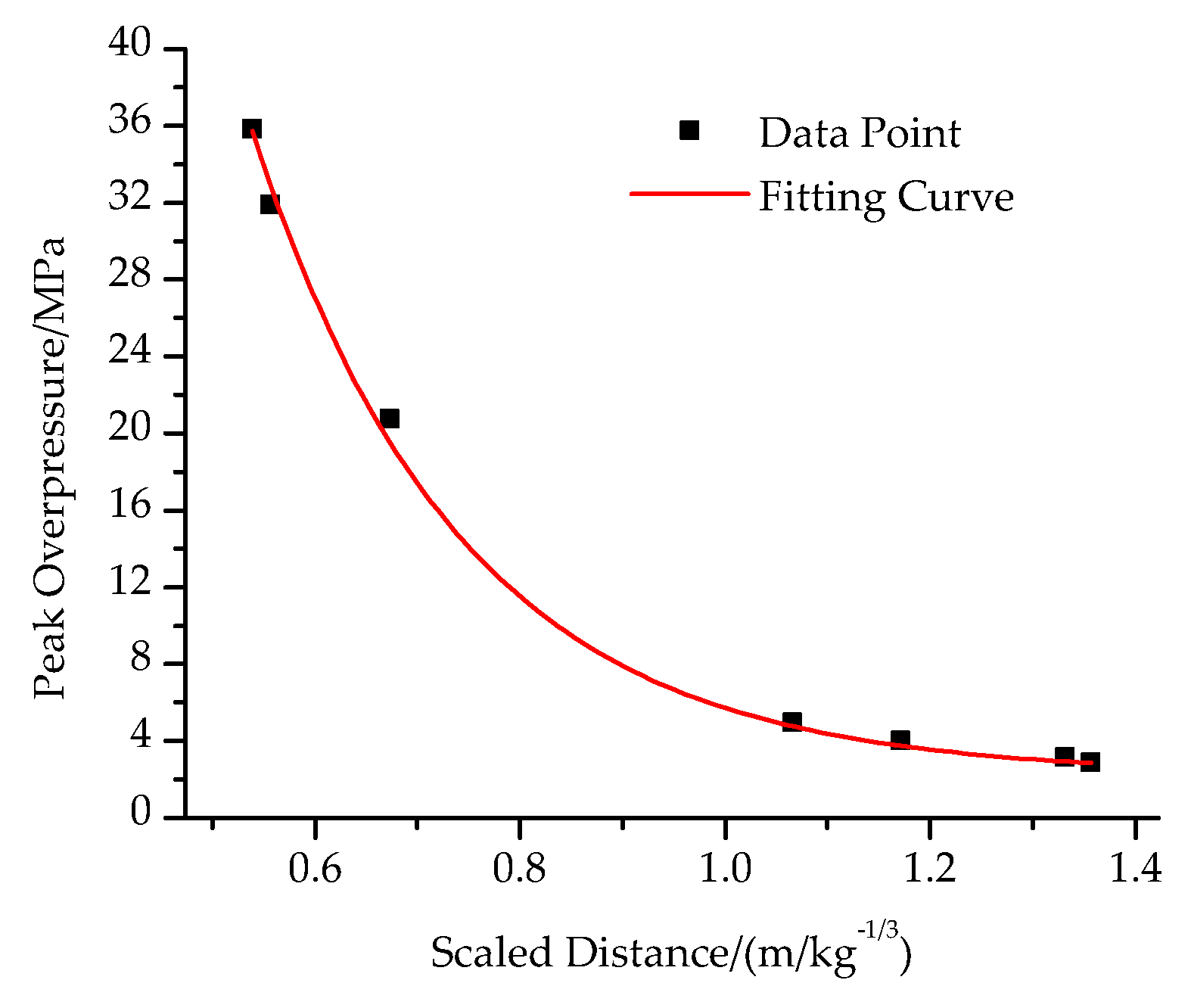1. Introduction
Manned spaceflight is playing an important role in the exploration and utilization of space. However, research on the safety systems in the whole process of space exploration is relatively scarce. The launch vehicle is a complex and large-scale technology-intensive system. It plays an important role in the manned space mission. Once an explosion occurs, it would threaten the safety of crew in the crew modules of rockets. Generally speaking, rocket explosion can be divided into various modes such as explosion on launch pad, in flight and impacting to ground, and this paper focuses on the explosion mode on the launch pad.
The study of rocket blast environment is an ongoing effort to characterize the environment resulting from catastrophic rocket explosion. The purpose is to develop the data and information required to allow launch vehicle and crew system designers to develop safer crewed launch systems. A massive explosion of a liquid-propellant rocket in the course of an accident can lead to a truly catastrophic event. Owing to its very low boiling point, liquid propellant is extremely hazardous and its leakage/sudden release from a pressurized tank would lead to vapor cloud formation resulting in subsequent fire and explosion.
This point has been amply demonstrated by a series of explosion accidents over the past decades. The space shuttle Challenger exploded 73 s after launch in 1986, killing all seven astronauts on board. As was established by the Challenger investigation, the original source of the disaster was freezing of the O-ring in the lower section of the left solid booster and formation of a gas leak through the O-ring [
1]. The Challenger disaster provoked studies of various risks that can lead to similar catastrophic events. In September 2016, the approximately 549 t Falcon-9 rocket exploded on the launch pad, causing
$200 million worth of damage to the AMS-6 communications satellite. Moreover, Space X’s main launch pad at the Cape Canaveral satellite launch base, severely affecting subsequent launch plans. The most likely cause of the accident was a leak of the helium system in the oxygen tank of upper stage. In April 2015, a Falcon-9 carrying 2 t cargo exploded just 139 s after launch, causing rocket destruction and delay in subsequent launch plans.
The hazards to personnel and facilities around the launch site must be considered in safety analysis and assessment. Many workers studied liquid propellant explosion characteristics by conducting experiments and analyzing experimental data. Between 1963 and 1969, NASA and other units conducted a series of rocket explosion scaled tests using liquid propellants such as liquid oxygen/kerosene, liquid hydrogen/liquid oxygen, and studied the hazardous characteristics of liquid propellant explosion [
2,
3,
4]. From 1962 to 1969, ADL (Advanced Distributed Learning) Corporation and the MIT (Massachusetts Institute of Technology) et al. managed the liquid oxygen/kerosene propellant tests of Saturn rockets during simultaneous mixing and separate mixing, to study the explosive yields of liquid propellant [
5]. Between 1966 and 1968, Fletcher et al. reviewed the hazards of liquid propellant explosion blast wave and determined the basic methods for blast wave research and hazard assessment [
6]. To develop a better understanding of the magnitude and the character of explosions resulting from a breach of LH2/LOX tanks and to clarify the important questions about cryogenic H2/Ox explosion mechanisms, Hydrogen-Oxygen vertical-impact (HOVI) tests were carried out at the NASA Johnson Space Center’s White Sands test facility [
7]. NASA had been funding an ongoing development program to characterize the explosive environment produced by using the test and accident data available from public or NASA sources as well as focused scaled tests that are focusing on the near field environment that threaten the crew modules [
8]. An empirical non-TNT approach was established to predict launch vehicles explosion environment characteristics in the near field by James. All available empirical data from full scale launch vehicle explosion tests and accidents was assembled. Crew survivability from catastrophic explosions could be increased in this way [
9].
Compared with test research, numerical simulation methods have some advantages, including reducing costs, improving efficiency, and facilitating parameters analysis. Osipov et al. conducted the assessment based on an interpretation of these data via analytical semiquantitative estimates and numerical simulations of simplified models for the whole range of the physical phenomenon governing the outcome of a propellant-tank breach [
10]. Hosangadi et al. assessed a specific failure resulting from a catastrophic disintegration during ascent of the crew launch vehicle liquid propellant tank and determined the time scales of the various processes and the strength and propagation of the blast wave if the mixture ignites [
11]. Jon et al. presents air blast and fragmentation hazard analyses during processing of launch vehicle in the Vehicle Assembly Building as well as consequence and risk analyses to provide added information for the decision maker [
12]. Lambertet al. studied explosive yields for Delta heavy vehicles in the explosion mode of impacting the ground with different distances and angles [
13].
Explosion is a complex multidisciplinary problem that involves combustion, fluid dynamics, thermodynamics, structure/fluid interaction, and shock physics for high-speed flows, especially the accidents. The physical process governing the breakup and vaporization of the bulk liquid propellants are extremely complex with a variety of phenomena such as flashing, aerodynamic gas/liquid mixing, and vaporization occurring concurrently. The launch vehicle makes this even more complex in that the vehicle is accelerating upward with the atmospheric conditions changing with altitude and vehicle velocities. The TNT (2,4,6-Trinitrotoluene) equivalent model is a good method using worst-case assumptions to define the potential explosions risk in an attempt to envelope the blast environment for crew module
The liquid propellant explosion test has high risk and high cost, and the experimental conditions are strict and the repeatability is poor, which makes the test difficult. With the development of computer simulation technology, numerical simulation has become the main method to solve such problems [
14].
Blast loads in simple geometries can be predicted by using empirical formulas. In a more complex model with rocket, one approach is to use numerical tools such as LS-DYNA [
15] to provide reliable estimates of the effects of adjacent structures on the blast loads. Numerical simulations can be used to extend the database of blast effects on the crew modules. Experiments have been conducted to validate the numerical simulation techniques against blast load experimental results. Numerical simulations can help to understand the hazards to the crew module of the blast wave. While detailed experimental investigations are not easy to perform, numerical simulations can close that gap. Hence, the number of field experiments can also be reduced by using numerical simulations. While an experimental investigation captures mainly one scenario, numerical simulations can be used to investigate a multiplicity of threat scenarios [
16].
Bo et al. simulated the peak overpressure and attenuation law of blast wave of liquid propellant explosion in the air by using AUTODYN software [
17]. Ke and Jingpeng et al. used the accident consequence analysis software PHAST to study rocket explosion hazards on launch pad, predicting the scope of the rocket explosion hazards, and dividing the safety distance with the relevant criteria [
18,
19]. However, hazards for the rocket explosion on launch pad and the crew module exposed to the blast wave have received relatively little attention. The results achieved previously cannot be used to estimate the impact on crew modules of blast wave caused by liquid rocket explosion on launch pad because potential hazards, including explosion overpressures, have not been clear. Therefore, it is important and far-reaching to study the propagation law of blast wave caused by rocket explosion on the launch pad and quantify the impact on the crew modules of blast wave to improve the ability of crew modules and to develop safety standards by using numerical simulations.
6. Results and Analysis
6.1. Analysis for Propagation Lawof Blast Wave
The non-rocket model only considers the propagation law of the blast wave in the air, while the aluminum alloy structure in the rocket model will hinder the propagation of the blast wave and cause complex reflection, flow around and superposition. According to the reflection theory of the blast wave, after the superposition of the incident wave and the reflected wave, the intensity of the blast wave will be greatly improved. In order to study propagation law of air blast wave of rocket explosion on launch pad, blast wave progress and its interaction with the rocket are obtained by simulating the model with and without a rocket. Take the stage-3 rocket explosion as an example to illustrate this problem.
Figure 6 shows the strain contours at different moments of stage-3 explosion, reappearing rocket damage process under the action of air blast wave after the explosion [
38]. A strong chemical reaction takes place after detonation, resulting in a sharp expansion and diffusion in all directions of the high temperature and high-pressure explosive products, and the blast wave propagates outward in the form of a spherical wave. When
t = 0.6 ms, the blast wave propagates to the rocketskin, causing the ellipsoid deformation of rocket structure. When
t = 1.2 ms, the structure of the stage-3 is damaged, and the debris flow around in a spherical manner. With the propagation of blast wave, the structural damage of the body gradually extends to the upper and lower sides, and the area of structural damage gradually increases. When
t = 5.1 ms, structure of almost the whole stage-3 and most of stage-2 are destroyed. When
t = 6.3 ms, blast wave propagates to the crew module and causes certain damage to it. According to the theory of mechanical strength of materials, stress of aluminum alloycaused by blast wave exceeds the yield limit of the material, resulting in plastic deformation and failure [
39].
Visualization of pressure contours available during the post-processing stage allows a better understanding of the complex process of blast pressure interaction with the rocket, as shown in
Figure 7. It presents pressure contours after stage-3 explosion for a simulation time varying from 0.6 to 6.3 ms. Different contour images represent typical moments of blast wave propagation, and different pressure values are represented by different colours. At the blast onset, a rarefaction happens in the explosive charge volume, because of the rapid fluid expansion [
40]. In the model without a rocket, the high-temperature and high-pressure explosive products produced by the explosive expand and spread rapidly around, and the blast wave spreads outward in the form of approximate spherical wave. With the passing of time, the wave front gradually broadens, but the spherical wave remains good. In the model with rocket, the propagation of blast wave becomes more complex. When
t = 1.2 ms, the propagation of air blast wave is hindered by the rocket skin and the superposition of front and rear blast waves occurs, so the spherical blast wave begins to deform. When
t = 5.1 ms, focusing phenomenon of blast wave appears in the rocket body, and the rest area still forms a stable blast wave to propagate outwards. The final waveform is conical in the upper and lower parts, and spherical in the middle. The higher overpressure points arein the tip of the cone-shaped blast wave. When
t = 6.3 ms, the blast wave pressure concentrates at the crew module and has a destructive effect on it. The resulting pressure difference causes air flow and rarefaction wave.
It can be seen that the development process of the flow field is basically consistent with the actual physical process. The initial blast wave is not a spherical wave, but gradually approaches a spherical wave at a certain distance. At the moment of contact between the air blast wave and the rocket body, the airflow particles at the front of the blast wave are impeded, resulting in the reduction of velocity and the change of direction, which is superimposed with the later blast wave to form an enhanced blast wave inside the rocket body.
6.2. Results of Different Explosion Scenarios
Peak overpressuresof blast wave in different scenarios are shown in
Table 11, which means damage to the crew module of different scenarios. As can be seen from
Table 11, the most dangerous scenario for the crew module is Scenario 3, which represents full propellant involved in the explosion. The smaller the scaled distance is, the larger peak overpressure will be. Peak overpressure will be as high as 35.84 MPa of Scenario 3, which will seriously damage the crew module. Similarly, the first explosion in Scenario 4 is the least harmful to the crew module. As its scaled distance is the biggest, its peak overpressure is the smallest, which is only 2.86 MPa.
All the simulation results exceed the low overpressures specified in the table, which will do great harm to the crew modules. Therefore, in order to prevent crew hazards, necessary protective measures should be taken for the crew modules.
6.3. EnhancementEffects on Peak Overpressure of Model with aRocket
The rocket model has a marked effect on the strength of the blast wave. For the whole rocket explosion scenario, the peak overpressure of model without a rocket is 2.09 MPa and that of model with a rocket is 35.84 MPa. The latter is 17 times of the former. Therefore, the influence of a rocket model on simulation results cannot be ignored.
Models with a rocket and without a rocket are established for each explosion scenario. The peak overpressure acting on crew module is taken respectively, and the influence of rocket body on the blast wave propagation is studied by comparing the results. It is assumed that in the model with and without a rocket, the peak overpressure of the blast wave acting on the crew module is
PR and
PA respectively, and the pressure enhancement factor
α =
PR/
PA is defined. Under different scenarios, the peak overpressures and the pressure enhancement factors are shown in
Table 12, and the pressure enhancement factor curve with scaled distance is shown in
Figure 7.
As can be seen from
Figure 8,
α generally decreases with the scaled distance increases. When the scaled distance is less than 1.0 m/kg
−1/3,
α decreases significantly with the increase of the scaled distance, from the highest 17.15 to 3.91. However, when the scaled distance is greater than 1.0 m/kg
−1/3,
α does not change significantly with the scaled distance, and is stable at about 4.
The rocket model can enhance the peak overpressure of blast wave. The factor is about 4 times in far scaled distance, while it is greater than 4 times in near scaled distance and up to 17 times. Therefore, the rocket model cannot be ignored when studying the effect of blast wave on the crew module.
6.4. PredictionFormula of Peak Overpressure
The peak overpressure data with different scaled distances are fitted to obtain the prediction formula of peak overpressure applicable to the explosion mode on launch pad. The first-order attenuation exponential function in the form of Equation (9) is used for fitting, and the fitting Equation (9) and the fitting curve in
Figure 9 are obtained.
Equation (9) describes the peak overpressure of blast wave acting on the crew modules as a function of the scaled distance and it can be used to predict the damage effect on crew modules of different stages explosions. As can be seen from
Figure 9, when the scaled distance is small, the peak overpressure is very high. With the increase of the scaled distance, the peak overpressure decays rapidly and eventually tends to be flat. According to the calculated scaled distance, the peak overpressure of blast wave acting on the crew module can be obtained by consulting
Figure 9, which greatly facilitates the prediction of the explosion hazard of the crew module.
